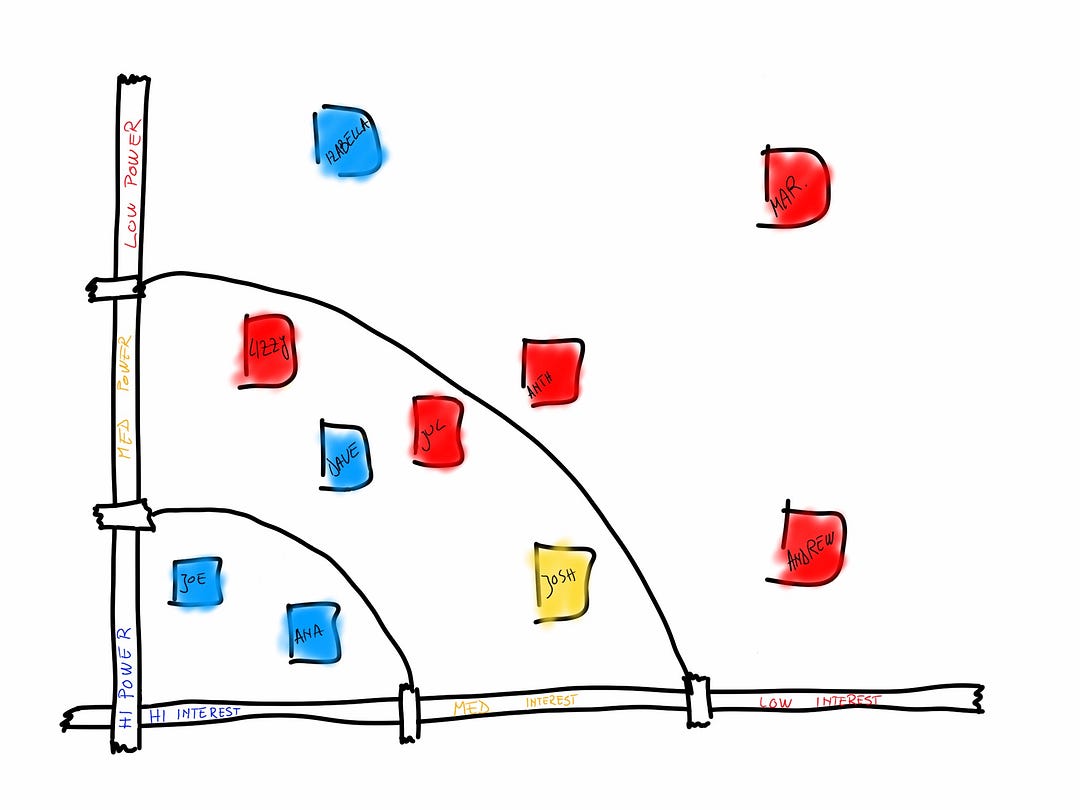 This is a guest post by Dan Toma, co-author of the award winning book The Corporate Startup and keynote speaker for our upcoming innovation conference Innov8rs Sydney, 25-27 September 2018
This is a guest post by Dan Toma, co-author of the award winning book The Corporate Startup and keynote speaker for our upcoming innovation conference Innov8rs Sydney, 25-27 September 2018
As counterintuitive as this might sound, in corporate context, building a product that customers want is not enough to keep the project going. Managing stakeholders is equally important.
There’s loads of content out there on this topic. And understandably so, for a topic relevant for project managers and product owners in many roles, not just in innovation. A simple Google search of the query ‘managing stakeholders’ returns about 10,600,000 results. By comparison, searching for ‘lean startup’ returns ‘only’ 4,400,000 results.
In The Corporate Startup we present a workshop activity dedicated to stakeholder management. This post wishes to be an addition to that activity, looking at specific actions that you can take when managing stakeholders.
For those of you looking for a summary of the stakeholder radar workshop activity here it is:
- Write down on individual sticky notes the names of every stakeholder in your project
- Create an XOY axis system where OX represents hierarchical power and OY is interest in your project
- Divide each axis in 3 segments: high, medium, low. With ‘high’ being the closest to O
- Place the stakeholders on XOY axis system relative to their individual hierarchical power and interest in the project
- Color code the stakeholders relative to their ‘friendliness’ towards your initiative. (eg.: ‘red’ for detractors and ‘blue’ for supporters, if you don’t know how a specific stakeholder feels about your project just leave the sticky note neutral)
In the end you need to end up with something looking like this:

Completing the stakeholder radar and colour-coding it, is just half of the story.
Now equipped with more transparency of who’s who, a product team needs to take action. In the interest of time I usually advise product teams to focus on only 2 groups of stakeholders. The ones that are in the ‘high-power high-interest’ and ‘medium-power medium-interest’ sections of the radar.
Here are some actions a product team can take to manage the above mentioned stakeholders relative to their ‘friendliness’ level towards the team.
High-power high-interest supporters
- schedule regular formal 1-on-1 meetings where you ask for advice, help or just inform them on progress
- invite them to regular open demos where you present the latest and greatest
- send out frequent 1-line updates
- offer public gratitude
- find options to involve them, then invite them to get more involved if they have time
- share your wins
- share your vision
- create case studies that they can distribute to other shareholders especially to detractors
Medium-power medium-interest supporters
- invite them to large group sitrep meetings
- have regular informal meetings keeping them in the loop on what’s going on with your project
- invite them to workshops
- share your wins
High-power high-interest detractors
- invite them to regular formal meetings
- offer public recognition
- ask for advice
- schedule private demos
- share your wins
- understand what motivates them to take a detractor stance
- change their perspective by using influencers supportive of your initiative
Medium-power medium-interest detractors
- have regular informal meetings
- schedule private demos
- share wins
- invite them to some of the open demos where you present the latest and greatest
This list of tactics is by no means complete. Using your contextual understanding of your particular situation will help you come up with other action items which are not listed here.
Important to note is that the listed actions are not one-size fits all. Before committing to any, try to get a clear understanding of the cognitive model of the person you have in front of you. This will help you tailor your action and increase your odds of success.

